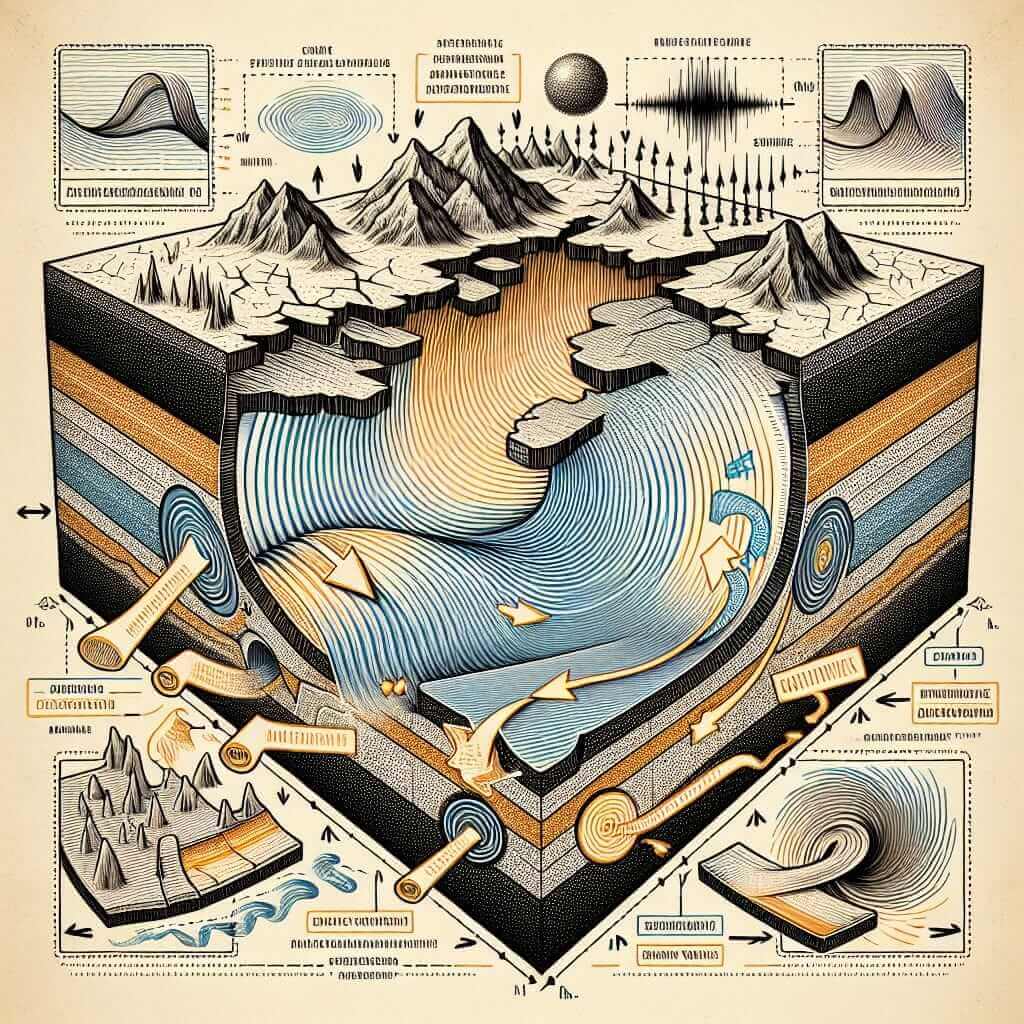The IELTS Reading test is known for covering a broad range of topics, among which the study of natural phenomena like earthquakes is a frequent subject. This topic not only broadens your scientific knowledge but also enhances your academic vocabulary—both crucial for achieving a high score. Historically, themes about natural disasters and scientific explorations, such as earthquakes, have appeared multiple times in IELTS Reading exams. Given their recurring presence, it’s plausible you’ll encounter a similar topic in future tests.
 Study of Earthquakes
Study of Earthquakes
Full IELTS Reading Practice Test: Study of Natural Phenomena Like Earthquakes
Reading Passage
The passage below is set at an intermediate difficulty level to model a typical IELTS Reading test excerpt.
The Study of Earthquakes
Earthquakes have captivated human curiosity for centuries, inspiring scientific research and instigating awe and fear alike. Essentially, earthquakes are the result of sudden movements along faults within the Earth’s crust. These movements are precipitated by the accumulation of energy as tectonic plates either collide, diverge, or slide past one another. When the stress exceeds the friction holding the plates together, energy is released in the form of seismic waves, which propagate through the Earth, causing the ground to shake.
Seismic waves, classified into primary (P-waves) and secondary (S-waves), each travel at different speeds and through various materials. P-waves are the fastest, capable of moving through both solid and liquid layers of the Earth, while S-waves, slower in speed, can only traverse solid materials. The differences in wave velocities provide crucial information for seismologists to pinpoint the earthquake’s epicenter and assess its magnitude.
The Richter scale and the Moment Magnitude Scale (Mw) are two primary tools for quantifying the strength of an earthquake. While the Richter scale measures the amplitude of seismic waves, the Moment Magnitude Scale calculates the total energy released, offering a more comprehensive understanding of an earthquake’s potential impact.
Seismologists rely on networks of seismometers—intricate devices designed to detect and record seismic vibrations. Data collected from these instruments help map out fault lines and predict future tremors, aiding disaster preparedness. Despite technological advancements, predicting the precise timing and location of earthquakes remains a complex challenge, highlighting the necessity for ongoing research.
Questions
Multiple Choice Questions
-
What primarily causes earthquakes?
- A. Rainfall
- B. Volcanic eruptions
- C. Sudden movements along faults within the Earth’s crust
- D. Strong winds
-
Which types of seismic waves can travel through both solid and liquid layers of the Earth?
- A. S-waves
- B. P-waves
- C. Surface waves
- D. Rayleigh waves
-
Which scale offers a more comprehensive understanding of the total energy released during an earthquake?
- A. Richter scale
- B. Beaufort scale
- C. Mercalli intensity scale
- D. Moment Magnitude Scale (Mw)
True/False/Not Given
- S-waves are faster than P-waves. (True/False/Not Given)
- The principal use of seismometers is to measure rainfall. (True/False/Not Given)
- Predicting the exact timing and location of earthquakes is currently fully accurate. (True/False/Not Given)
Answer Keys
- C – Sudden movements along faults within the Earth’s crust.
- B – P-waves.
- D – Moment Magnitude Scale (Mw).
- False – S-waves are slower than P-waves.
- False – The principal use of seismometers is to detect and record seismic vibrations.
- False – Predicting the exact timing and location of earthquakes is still a major challenge.
Common Mistakes
- Misinterpreting scientific terms: Ensure you understand terms like “tectonic plates”, “seismic waves”, and “fault lines”.
- Overlooking details: Pay attention to the specifics of each scale and their applications.
- Confusing wave types: Remember, P-waves travel through both solid and liquid whereas S-waves do not.
Vocabulary
- Tectonic Plates (n) [tek-ton-ik pleits]: Large movable plates under the Earth’s surface.
- Seismic Waves (n) [sai-zmik weivz]: Waves of energy that travel through the Earth as a result of an earthquake.
- Epicenter (n) [ep-i-sen-ter]: The point on the Earth’s surface directly above the focus of an earthquake.
Grammar Focus
- Passive Voice: Used frequently in scientific contexts to emphasize events over the subjects performing the action.
- Example: “Energy is released in the form of seismic waves.”
- Relative Clauses: Provide additional information about the noun.
- Example: “Seismometers, which are intricate devices, detect seismic vibrations.”
Tips for High IELTS Reading Scores
- Practice regularly: Familiarize yourself with various topics, especially scientific and natural phenomena.
- Enhance vocabulary: Focus on academic words and their usage.
- Skim and scan: Learn to quickly locate key information.
- Understand question types: Differentiate between True/False/Not Given and Matching Information formats.
By understanding and practicing the nuances of natural phenomena like earthquakes, you’ll not only enrich your scientific acumen but also stand a better chance of acing the Reading section of your IELTS exam.
For further practice, explore our detailed readings on discoveries in marine biology.


